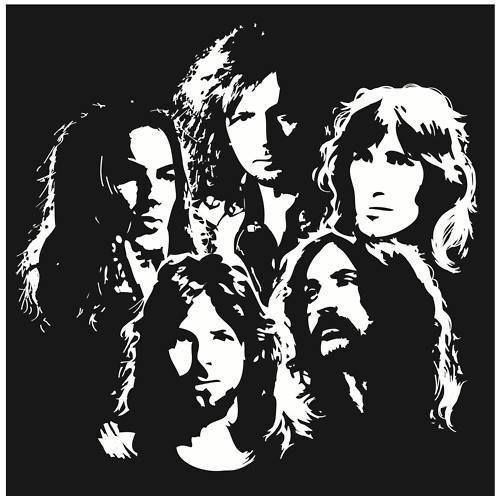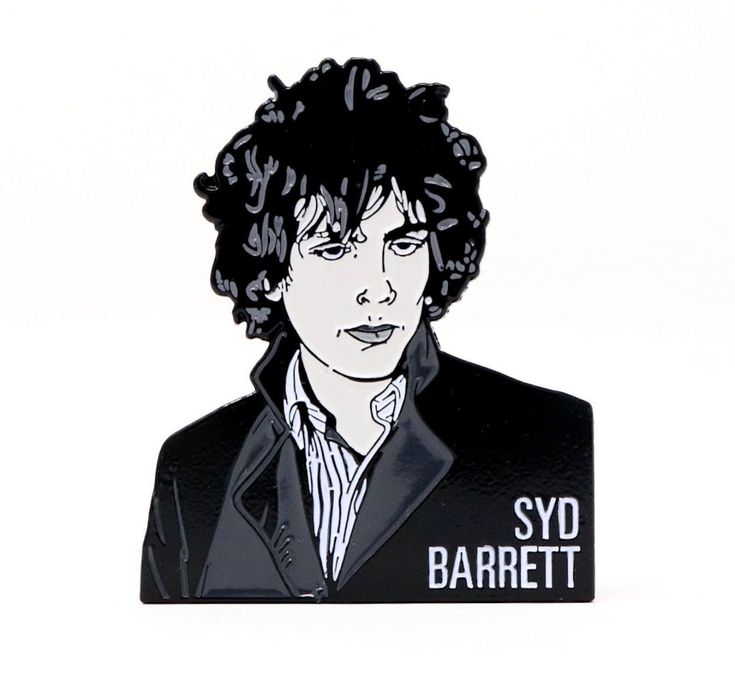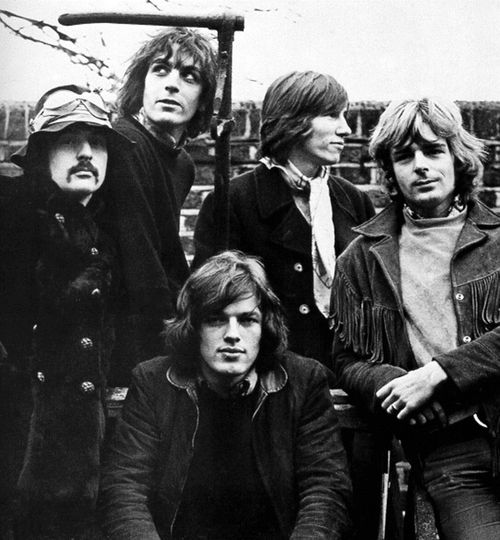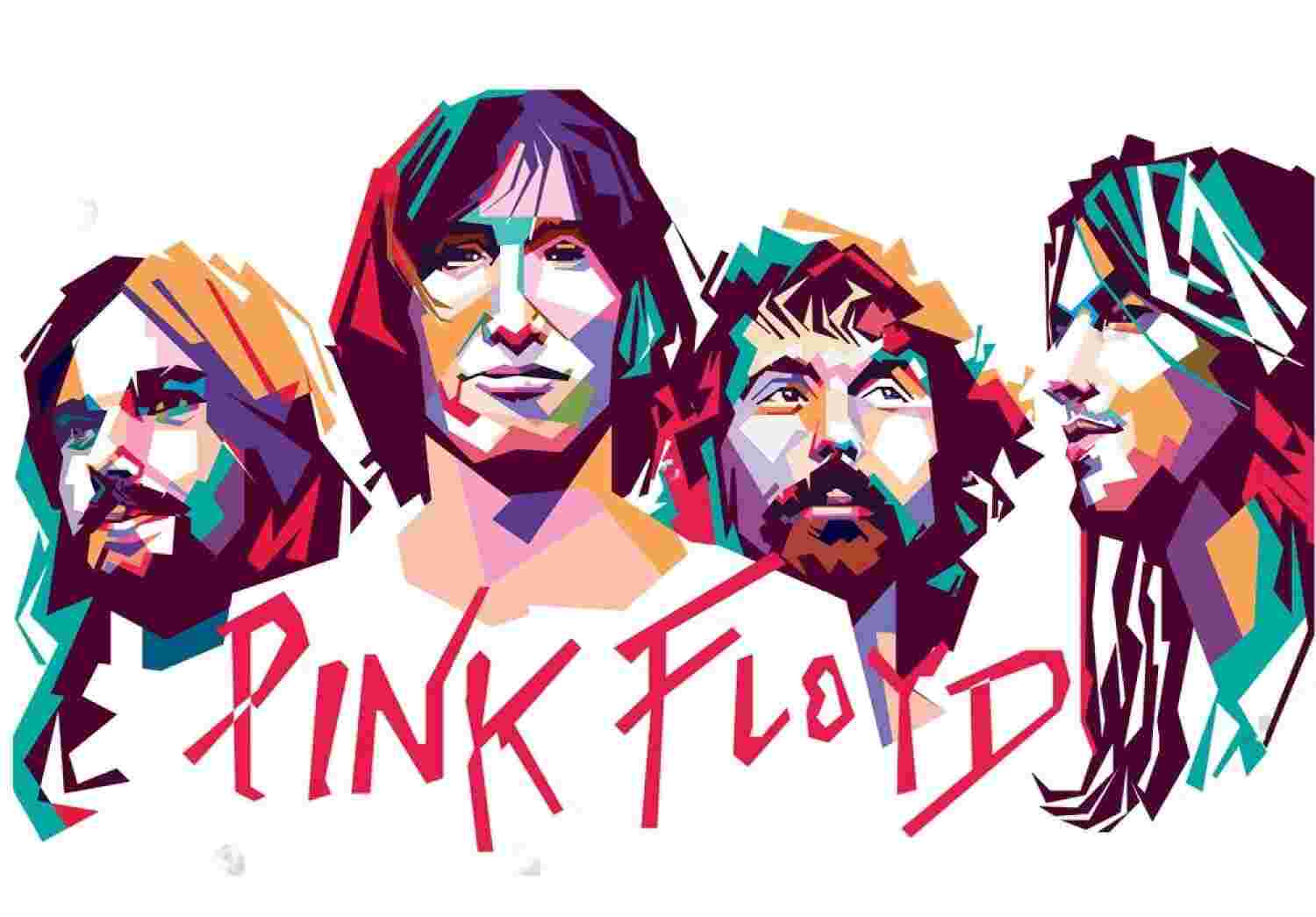Think of iconic music that outdoes generations and genres; British Rock band Pink Floyd is the name that invariably comes to anyone’s mind. Pink Floyd Music Brand was the architects of psychedelic rock and progressive rock of the music industry. Their innovative melodies, thought-provoking lyrics, and mesmerizing live performances have solidified their position as one of the most influential and timeless bands in the musical world.
With a discography that spans over five decades, Pink Floyd music band’s contribution is a journey through time and space, leaving an incredible mark on the world of rock and progressive music. Wondering how they started and caused this much impact? Let’s see!
Birth of Pink Floyd Music Band

The English rock band, formed in London in 1965, was a group of students who went to college then. Syd Barrett, Roger Waters, David Gilmour, Nick Mason, and Richard Wright were the original band members of Pink Floyd. They initially started with psychedelic and progressive rock but explored various genres later.
Initially, they had to go through a lot of name changes. It started as “The Tea Set,” but they had to reform the name because of the bootlegging issues since there was already a group named after this name. After that, they took their inspiration from two blues musicians, Pink Anderson and Floyd Council. Therefore, Pink Floyd was named and finalized.
Pink Floyd’s original members: New line-up, New Era
Pink Floyd was created by four core members: Syd Barrett (guitarist, lead vocals), Nick Mason (drums), George Roger Waters (bassist, vocals), and Richard Wright (keyboards, vocals). In 1967, a new guitarist and vocalist, David Gilmour, joined Pink Floyd in December, strengthening the group.
Unfortunately, Syd Barrett, their lead vocalist, guitarist, and leading band member, had to leave because of his unexpected mental illness and dosage of drugs. When they dumped Barrett, Waters became the band’s new lyricist and conceptual leader. From here, they developed the mighty Pink Floyd members we know today.
The Syd Barrett Era: A Burst of Psychedelic Brilliance

Although Barrett’s duration in Pink Floyd was limited, he was the band’s foundation. He left a significant impact, and that was phenomenal. His contribution led the group to explore and cherish more and more in the future. There wouldn’t be Pink Floyd today without Syd Barrett. In his almost four active years, he wrote and produced 22 songs, some of which were massive hits of all time.
Their debut album, “The Piper at the Gates of Dawn,” was very successful and had two non-album singles, “Arnold Rayne” and “See Emily Play” ranked in the charts under Barrett’s leadership. He was not only the leader of the band but also the only writer of masterpieces and lead singer to give them the perfect vocals those songs deserved.
Unfortunately, he was hooked on drugs, eventually leading him to self-destruction and his bandmates to dump him because he wasn’t being himself anymore. His drug intake had the purpose of creating mind-blowing lyrics that were pulled from the realm nobody knows about. But his brilliance came with its dark side, and it was too much for him to handle at some point, ultimately making him suffer from “nervous exhaustion.” Despite his deteriorating mental health, Pink Floyd was thriving nonetheless. They had to replace him with heavy hearts to keep their dreams alive.
The Water-led Era: Shaping the Band’s Identity

Richard Waters was one of the mains behind building the band from the beginning till he ended ties with the band. He used to be a member of his former band named “Sigma 6,” once they disbanded, Waters brought in Syd Berrett. Together, they built the band Pink Floyd with Mason and Wright in the frame. Their debut single was “Sound” in 1966, and the album was “Piper at the Gates of Dawn,” which has the first original tune of Waters, “Take Up thy Stethoscope and Walk.”
After Barrett’s departure in 1968, Waters took the reins as the core songwriter and lyricist with Gilmour in the frame. From that day onwards, their audience kept growing with their passion and fame. Their work of genius “Dark Side of the Moon,” “Wish You Were Here,” “Animals,” and “The Walls” were led by Waters and gained massive recognition worldwide. He became well-known for his unique lyrics and eventually made his solo album named “The Final Cut.”
His solo album which was stated as “performed by Pink Floyd” was not a cooperative approach according to band mates. His perfectionism and controlling persona drove him out of the band. Gilmour led Pink Floyd after going through a lawsuit and many more issues. Later, Roger Waters carried on his solo career with loads of hits again and united with his band once or twice for solid reasons, obviously.
Gilmour’s Leading Dynamics
Gilmour’s arrival in the band as a guitarist was through Mason. When it was publicly announced that Barrett would be out of sight for a while, Gilmour would take over live shows instead. He left his previous band, “Jokers Wild,” for Pink Floyd, and the rest is history. The role of lead creative force in the whole crew was passed upon him after Richard’s angry departure. David thrived in his role and released three more studio albums before focusing on his solo career.
The guitar maestro, Gilmour, is known as one of the most influential rock musicians of all time simply because of his innovative tones and effects on guitar. His passion for guitar could be seen when he stated, “I wanted a bright, powerful lead guitar tone that would rip your face off.”
The Division Bell
The most enduring feud in musical history is “Gilmour vs. Waters,” the two phenomenal members of Pink Floyd’s clash. It started when Waters left the band in 1985 and sued the rest of the members for the name. Their feud era was longer than the time they spent as band members. After the legal issues, they came to a truce two years later. Still, their complicated feelings for each other lingered for an extended period. Surprisingly, at a charity show, “Live 8,” in 2005, they were seen together, and it was a real feast for their fans nonetheless. That was a reunion for the band, giving a little hope to the fans for new releases. But to date, they are still not over their negative feelings for each other and Pink Floyd.
Why Pink Floy’s Live Shows Were More Than Just Music?
Whenever Pink Floyd performed live, it was always a feast to the audience’s senses. They could make unique combinations, bases, and effects with simple instruments like drums, a few guitars, and a keyboard, yet created the masterpieces of history. Their unique soundscapes with distant keyboard synths, acoustic guitar, or longing vocals gave them massive hit albums of all time.
Besides, their live shows with various concepts and sparky props constantly upgraded their performances to another level. Stage sets, spotlights, lasers, and sparkly appearances brought huge audiences and fans over time. Their concerts were immersive experiences, featuring elaborate light shows, giant inflatables, and visual projections synchronizing with the music. Many of their performances were listed in history as the most magical shows ever to attend because of their creative concepts to present on-stage.
Pink Floyd’s Influence on Contemporary Music
Being the most influential band of all time, Pink Floyd pioneered progressive and psychedelic rock. Established the concept-based album and theme-wise live shows. They have sold millions of albums worldwide since their catalog of albums was huge.
The greatest albums like “The Dark Side of the Moon,” “The Wall,” and “The Final Cut” inspired many rock musicians and introduced them to new genres. After Barrett’s chronic illness and departure, the band took half a decade to find out their style and niche down their genre. But eventually, they made their albums so diversified that each has its essence and persona.
From “Dark Side” to Endless Reverberations
Pink Floyd created many songs, but the album “The Dark Side of the Moon” beats all and has the most innovative, creative music productions with phenomenal concepts. When it was released, it was momentarily accepted by critics and fans, immediately was in the spotlight, and now became one of history’s most fabulous music creations.
The musical foundation of this album was strong because of multiple genres like blues, experimental rock, jazz, and emotional commentary. Impactful concepts like time, mental illness, death, greed, darkness, etc., made the album even more influential and substantial. People still remember this masterpiece, a favorite from generation to generation.
Music Beyond Boundaries
Very few bands were lucky enough to see the evolution of music over time. Still, Pink Floyd had the luck of seeing the music industry evolve for over six decades. On top of that, they didn’t sit with their old classics but also adapted well with time and trends. Over time, they had to face many ups and downs with the line-up. Nonetheless, they were loyal to their vision and kept releasing more innovations.
Be it Barrett’s out-of-world lyrics, Water’s unique conceptions, or Gilmour’s guitar mastery, each era had its glory and essence of the different front-runner. Although their time was limited, their contribution to this band and music industry is timeless. Their relatable lyrics were always used to touch people’s hearts since they portrayed human pain in a relatable way that didn’t rub them in the wrong way.
It was bewildering how they could exhibit humanity’s vulnerable and spiraling pain in the most smooth and balanced way. Their message was always clear from the philosophical perspective to help people rather than considering monetary benefit. They didn’t choose the sound, but music decided to show its magic through them.
Why is Pink Floyd Music Brand One of The Best Bands of All time?
Pink Floyd’s music transcends the limitations of time and genre. Their experimental approach, willingness to explore the depths of human emotion, and innovative soundscapes have earned them among the most incredible musical acts ever. Their groundbreaking albums like “The Dark Side of The Moon” and “The Wall” pushed the boundaries of rock music, integrating complex instrumentals, thought-provoking lyrics, and immersive concepts into their work.
Their live performances, renowned for their spectacular visuals and experiences, set new standards for what a concert could be. Beyond their musical skills, Pink Floyd addressed profound themes such as alienation, the human condition, vulnerability, mental illness, etc., resonating with listeners profoundly and emotionally.
Their influence spans genres, inspiring countless artists to explore progressive and psychedelic rock. Their ability to create music that excels in time and resonates with audiences across generations cements their legacy as one of the best bands in music history.
FAQ
Which Pink Floyd member went crazy?
Principal member of the band, Syd Barrett, went crazy because of his deteriorating mental health due to excessive usage of drugs. He was the front-runner leading the whole band being the lead vocalist and chief lyricist.
Which Pink Floyd member killed himself?
Syd Barrett, one of the founding members of Pink Floyd, experienced significant mental health issues during his time with the band due to LSD intake. However, he didn’t commit suicide. He died in 2006 due to complications related to diabetes.
Why did Syd Barrett leave Pink Floyd?
Syd Barrett departed from Pink Floyd due to his deteriorating mental health, causing more harm than good in his last moments with the band.
When did David Gilmour join Pink Floyd?
David Gilmour joined Pink Floyd in 1968 to replace Syd Barrett temporarily to run the live shows when bandmates decided to keep Barrett out of sight for a while.











Leave a Reply